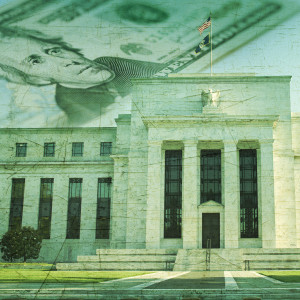The Federal Reserve’s Open Market Committee meets this week (Tuesday and Wednesday) to decide whether it should continue to use taxpayer money to subsidize banks by $30 billion annually, or increase the subsidy. Shocking as it sounds, this is how the Fed raises interest rates. Paying banks higher interest rates on their reserves causes banks to increase their loan rates and tightens monetary policy. For banks, it’s easy cost-free money. For taxpayers, however, monetary policy is becoming an increasingly expensive burden.
The Federal Reserve has been paying banks interest on reserve balances (IOR) since 2008. At first, the rate was 0.25 percent, and banks had only $260 billion in reserve balances — netting banks a $650 million annual taxpayer subsidy. Today, banks earn 1.25 percent on nearly $2.35 trillion in reserves, or $30 billion annually in taxpayer subsidies. About half of this subsidy goes to the 25 largest domestic banks while a third goes to foreign institutions that hold reserves at the Fed.
The Fed tightens monetary policy to raise interest rates and slow the economy by raising the IOR rate it pays banks these days. Banks won’t lend their reserves to consumers and businesses unless they earn a rate higher than the IOR. Therefore, raising the IOR boosts interest rates on business and consumer loans.
Former Federal Reserve officials argue that IOR payments are not a Fed subsidy to banks. Fed chair Janet Yellen has assured Congress that IOR is a critical monetary policy tool given the Fed’s $4.5 trillion balance sheet, and that the Fed remits far more to the U.S. Treasury than it pays in IOR to banks.
Fed spin notwithstanding, IOR payments are a bank subsidy, pure and simple.
Prior to the financial crisis, banks traded their reserve balances in the federal funds market. The federal funds rate — the Fed’s target policy rate — was set by supply and demand. Banks with excess reserves lent to banks that needed reserves. The federal funds rate balanced the demand for bank reserves with the supply of excess bank reserves. The Fed bought (or sold) Treasury securities daily to increase (or decrease) the supply of bank excess reserves to keep the federal funds rate at the Fed’s target rate.
The Fed’s crisis response massively expanded its balance sheet and ballooned bank excess reserves, destroying the market for bank excess reserves. The federal funds rate would be zero if the Fed were not now offering 1.25 percent IOR to borrow reserves from banks.
If you do the accounting, it is taxpayers, not the Fed, who pay the IOR bill, which is ironic because IOR payments are used to raise the loan rates paid by consumers and business.
In theory, higher IOR rates should also boost interest rates banks pay on consumer and business deposit accounts — but this hasn’t happened. The national average rate paid by banks for interest checking and savings deposits are 0.04 percent and 0.06 percent respectively — poor yields compared to the 1.25 percent IOR banks earn.
Are there policy changes that can ease the taxpayers’ bill? Perhaps.
The Fed’s preferred monetary strategy is to allow its portfolio of U.S. Treasury and government housing agency securities to amortize, only partly re-investing maturing proceeds, while controlling interest rates using IOR. Over time — a long time — excess reserves would eventually decline. Until then, taxpayers would pay banks IOR subsidies.
The Fed could, instead, sell its massive Treasury and GSE portfolio outright. This would reduce excess banks reserves, rekindle a competitive market for federal funds, and eliminate the need for IOR payments. But selling the Fed’s portfolio would put substantial pressure on long-term interest rates, which would probably rout financial markets and tank economic growth.
The Fed could eliminate excess reserves by raising the banks’ required reserve ratio. But this policy tool was abandoned long ago because uncompensated reserve requirements are an implicit tax on banks, and converting $2 trillion in excess reserves into required reserves would impose a massive tax.
One new solution, however, would make the Fed’s preferred slow-runoff strategy more palatable to taxpayers. Congress could create a new class of mutual funds that directly earn interest on Fed reserve balances.
A simple change in existing legislation could allow a new type of mutual fund to deposit unlimited balances directly with the Fed and earn interest on these reserves. The Fed could set an IOR rate for mutual fund reserve balances just as it does for banks. But unlike banks, the mutual funds would pass the IOR rate directly on to businesses and consumers after deducting minimal management fees.
These new mutual funds should be restricted to investing in Fed reserve balances, and to differentiate these funds from regular bank transaction accounts, monthly customer investment and withdrawal transactions should be limited. Since these mutual funds will be completely risk free, they should be exempt from most money market fund regulations.
The creation of this new class of mutual funds would reduce the taxpayer funded subsidies banks earn from IOR payments. Banks would be forced to match the mutual fund IOR rate, or depositors would migrate to these new mutual funds. Businesses and consumers would directly benefit from the interest payments the Fed now must make to implement monetary policy while competition would reduce the hidden taxpayer support IOR currently provides to the largest banks.

